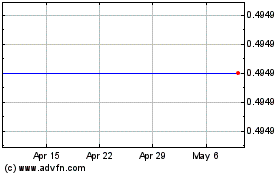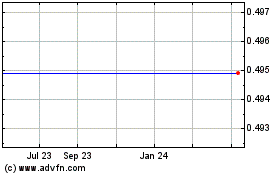Metacrine Initiates Phase 2a Combination Trial of MET409 with Empagliflozin in Patients with Type 2 Diabetes and NASH
January 05 2021 - 6:30AM

Metacrine, Inc. (Nasdaq: MTCR), a clinical-stage biopharmaceutical
company focused on discovering and developing differentiated
therapies for patients with liver and gastrointestinal diseases,
today announced that the first patient has been treated in the
company’s Phase 2a trial evaluating MET409 (50 mg) in combination
with empagliflozin (Jardiance®), a sodium-glucose cotransport-2
(SGLT2) inhibitor, in patients with both type 2 diabetes mellitus
(T2DM) and nonalcoholic steatohepatitis (NASH). T2DM and NASH
co-exist in many patients, with abnormal liver fat content seen in
up to approximately 70% of patients with T2DM and biopsy-proven
NASH in up to approximately 25% of patients.
“NASH is a multifactorial liver disease associated with a number
of co-morbidities, including type 2 diabetes,” said Eric J. Lawitz,
M.D., vice president of scientific and research development at The
Texas Liver Institute, clinical professor of medicine at the
University of Texas Health San Antonio and primary investigator for
the Phase 2a trial. “Even though patients with T2DM are perceived
to have a more aggressive form of NASH and fibrosis, there has been
a lack of innovative treatments for these patients. I am encouraged
by MET409’s monotherapy clinical data in patients with NASH, as
well as its potential to combine with a SGLT2 inhibitor. I look
forward to evaluating MET409 in this combination, potentially
enabling its clinical use in the future.”
Metacrine has developed a proprietary farnesoid X receptor (FXR)
platform utilizing a unique chemical scaffold, which has
demonstrated a differentiated and improved therapeutic profile in
the clinic. MET409, Metacrine’s lead product candidate, is a
once-daily, orally administered FXR agonist that is being evaluated
as both a monotherapy and a combination therapy for the treatment
of NASH. In a 12-week trial in patients with NASH, MET409 (50 mg)
achieved approximately 38% mean relative liver fat reduction and
was associated with a 16% overall pruritus rate, with no
discontinuations due to pruritus, and a 7% LDL-cholesterol
increase, findings that are favorable and perceived as
class-leading for FXR agonists.
SGLT2 inhibitors, such as empagliflozin, are once-daily, oral
anti-diabetic medications that are increasingly viewed as a
paradigm-shifting therapeutic class for T2DM. In addition to
beneficial effects on metabolic control and cardio-renal
protection, SGLT2 inhibitors have demonstrated positive effects on
liver fat reduction. In a proof-of-concept trial in patients with
NASH and T2DM, empagliflozin (10 mg) achieved approximately 30%
relative liver fat reduction after 20 weeks of treatment. SGLT2
inhibitors therefore have the potential to complement the
liver-targeting therapeutic effects of FXR agonism on hepatic
steatosis, inflammation and fibrosis.
“We are pleased to begin this trial, given the meaningful impact
this combination could demonstrate in patients affected by these
challenging and often overlapping conditions,” said Hubert C. Chen,
M.D., chief medical officer of Metacrine. “MET409 has already shown
significant liver fat reductions and a differentiated tolerability
profile as a monotherapy in patients with NASH. Importantly, as a
once-daily, oral therapy, MET409 has the potential to be an ideal
backbone for use in combination treatment. We look forward to
advancing the trial in a key segment of the NASH patient
population.”
The Phase 2a clinical trial is a 12-week, randomized,
placebo-controlled, multi-center trial evaluating the safety,
tolerability and pharmacological activity (as measured by
reductions in liver fat content with magnetic resonance
imaging-derived proton density fat fraction) of MET409 in
combination with empagliflozin in patients with T2DM and NASH.
Eligible patients will be randomized into one of four cohorts:
MET409 (50 mg), MET409 (50 mg) plus empagliflozin (10 mg), placebo
alone or placebo plus empagliflozin (10 mg). Each trial drug will
be given once-daily by oral administration. The trial will enroll
up to 120 patients in the United States. Metacrine expects to
report topline data in the first half of 2022.
About MetacrineMetacrine, Inc. (Nasdaq: MTCR)
is a clinical-stage biopharmaceutical company building a
differentiated pipeline of therapies to treat liver and
gastrointestinal (GI) diseases. Metacrine has developed a
proprietary farnesoid X receptor (FXR) platform utilizing a unique
chemical scaffold, which has demonstrated a differentiated and
improved therapeutic profile in clinical trials. The company’s two
product candidates, MET409 and MET642, are currently being
investigated in clinical trials as potential new treatments for
non-alcoholic steatohepatitis (NASH). MET409 has completed a
12-week monotherapy trial in patients with NASH and is being
evaluated in a 12-week combination trial with empagliflozin in
patients with both NASH and type 2 diabetes. MET642 has completed a
14-day Phase 1 trial in healthy volunteers and is being advanced
into a 16-week monotherapy trial in patients with NASH.
Forward-Looking StatementsThis press release
contains forward-looking statements within the meaning of the
Private Securities Litigation Reform Act of 1995. Statements in
this press release that are not purely historical are
forward-looking statements. Forward-looking statements contained in
this press release include statements regarding the therapeutic
potential of MET409; statements regarding Metacrine’s timelines;
the differentiated nature of Metacrine’s FXR program; plans
underlying Metacrine’s clinical trials; plans for advancing the
clinical development of Metacrine’s FXR program; the potential for
its FXR product candidates to be long-term therapies for NASH; the
potential for its FXR product candidates to be used in combination
therapies; and the potential for its FXR product candidates to be
therapies for patients with both NASH and T2DM. Many factors may
cause differences between current expectations and actual results,
including unexpected safety or efficacy data observed during
preclinical or clinical studies and uncertainties related to the
regulatory approval path for the NASH indication. Words such as
“may,” “could,” “will,” “encourage,” “expect,” “plan,” “aim,”
“anticipate,” “estimate,” “intend,” “potential,” “prepare” and
similar expressions (as well as other words or expressions
referencing future events, conditions or circumstances) are
intended to identify forward-looking statements. These
forward-looking statements are based on Metacrine’s expectations
and assumptions that may never materialize or prove to be
incorrect. Each of these forward-looking statements involves risks
and uncertainties. Actual results may differ materially from those
projected in any forward-looking statements due to numerous risks
and uncertainties, including but not limited to: risks and
uncertainties regarding regulatory approvals for MET409 or MET642;
potential delays in initiating, enrolling or completing any
clinical trials; potential adverse side effects or other safety
risks associated with Metacrine’s product candidates; competition
from third parties that are developing products for similar uses;
and Metacrine’s ability to obtain, maintain and protect its
intellectual property. Information regarding the foregoing and
additional risks may be found in the section entitled “Risk
Factors” in Metacrine’s Quarterly Report on Form 10-Q filed with
the Securities and Exchange Commission (the “SEC”) on November 12,
2020, and in Metacrine’s other filings with the SEC. All
forward-looking statements contained in this press release speak
only as of the date on which they were made. Except as required by
law, Metacrine assumes no obligation to update any forward-looking
statements contained herein to reflect any change in expectations,
even as new information becomes available.
Contact:Chelcie ListerTHRUST Strategic
Communications910.777.3049investors@metacrine.com
Metacrine (NASDAQ:MTCR)
Historical Stock Chart
From Mar 2024 to Apr 2024

Metacrine (NASDAQ:MTCR)
Historical Stock Chart
From Apr 2023 to Apr 2024
